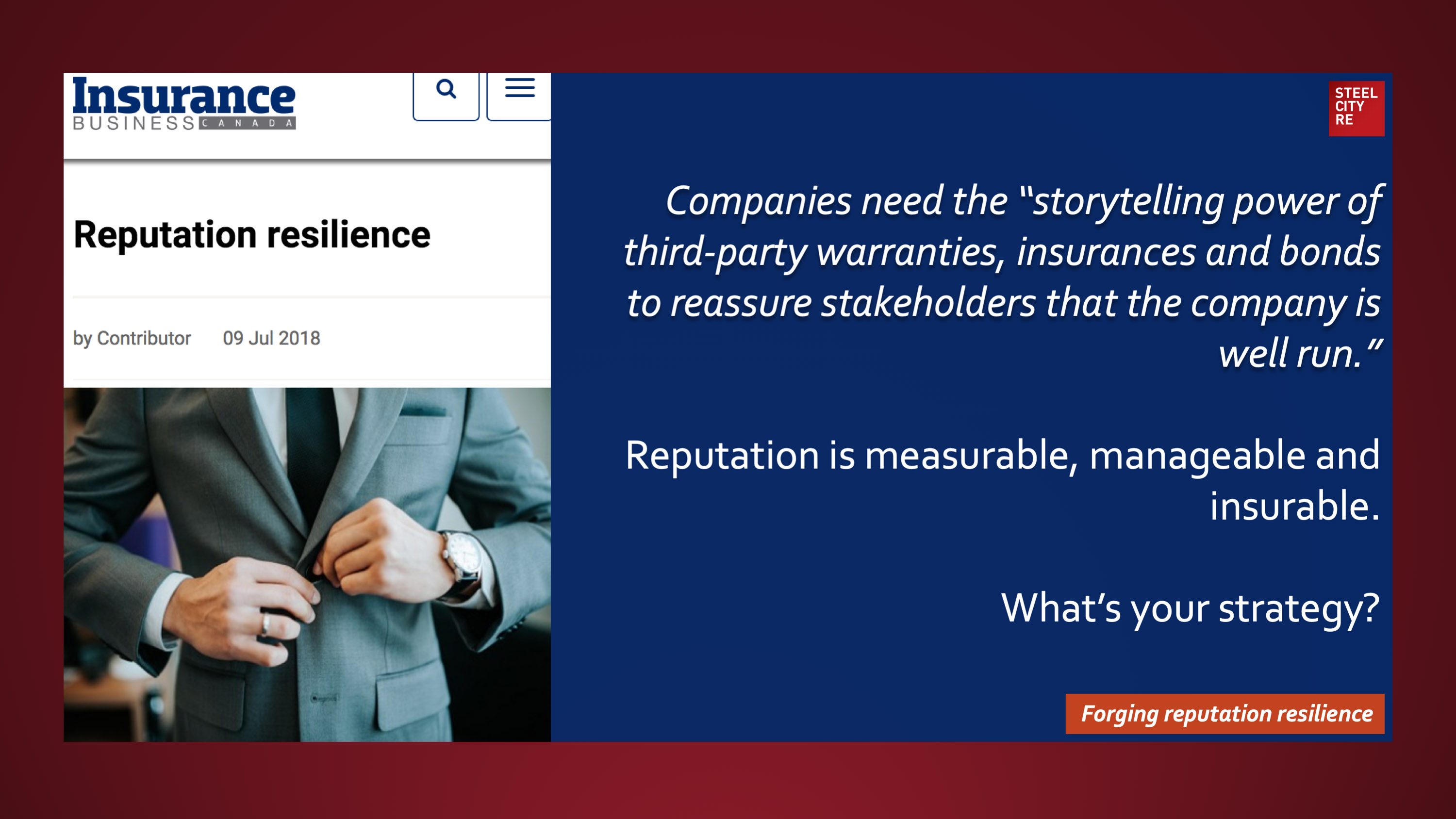Companies that want to thrive in this new cultural climate need to embrace the concept that reputational risk is at least as consequential as operational risk. They need to task their enterprise risk management teams with the mission of understanding stakeholder expectations and building reputation resilience. And they need a risk management plan that enables them to build an affirmative narrative about corporate practices and governance before a reputation risk storm hits. Such a narrative requires the storytelling power of third-party warranties, insurances and bonds to reassure stakeholders that the company is well run in a way that is pre-positioned, simple to understand and completely credible.
An operational crisis occurs when something a company is expected to control goes wrong. Often this involves a failed control for ethics, innovation, safety, security, sustainability or quality. A reputational crisis occurs when stakeholders believe the company didn’t make an authentic effort at mitigation – and they’re disappointed or angry that the company’s leadership failed them.
At the moment, this climate is coinciding with shifts in expectations that are suddenly and profoundly changing the risk environment for businesses. Today, it is crucial for companies to consider reputational risk sideby-side with operational risk; they are both threats to assets of value that can be managed, measured and insured.
Social media is being harnessed by influencers, including politicians, who are adept at channelling the public’s anger or disappointment toward specific targets. The generally angry mood that exists today has led politicians, the media, activist investors, customers and other stakeholders to direct their anger not only at the corporate entity, but also toward the individuals who lead it. And while large companies have significant marketing resources available to protect and rehabilitate their brands, individual executives and board members are far more vulnerable and will often wear a ‘scarlet letter’ for life.
Financial damage due to what The Economist termed a “reputation meltdown” is not just manifesting itself at Facebook. The cost of reputational attacks against companies has risen by more than 500% over the past six years, according to research conducted by my firm, Steel City Re. The onslaught is fuelled by weaponized social media; it’s ironic that the cultural shifts we are seeing today are occurring at so sweeping a pace in part because of Facebook itself, which has made rapid communication so prevalent.
July 10, 2018
Insurance Business
“Companies need the “story telling power of third-party warranties, insurances, and bonds to reassure stakeholders that the company is well run.”
Reputation is measurable, manageable, and insurable.
Reputations are valuable strategic intangible assets. Threats to these assets⏤ enterprise reputation risks, often mislabeled “brand risks” ⏤ need to be managed, and management needs to be overseen through reputation risk governance lest reputational damage or reputational harm result in long-tailed go-forward losses in economic value and/or political power. Because these intangible risks arise from the interplay of stakeholder expectation, experiences, and media amplification, parametric insurances for intangible asset risks, for reputational value, for reputational harm, and for reputation assurance help mitigate risk by telling a simple, convincing and completely credible story of quality reputation governance to stakeholders. This story telling effect is the expressive power of insurance complementing insurance’s better known instrumental power of indemnification.
Risk management, risk financing in insurance captives, and risk transfer through reputation insurances comprise the constituent elements of a comprehensive solution. What’s your strategy?

